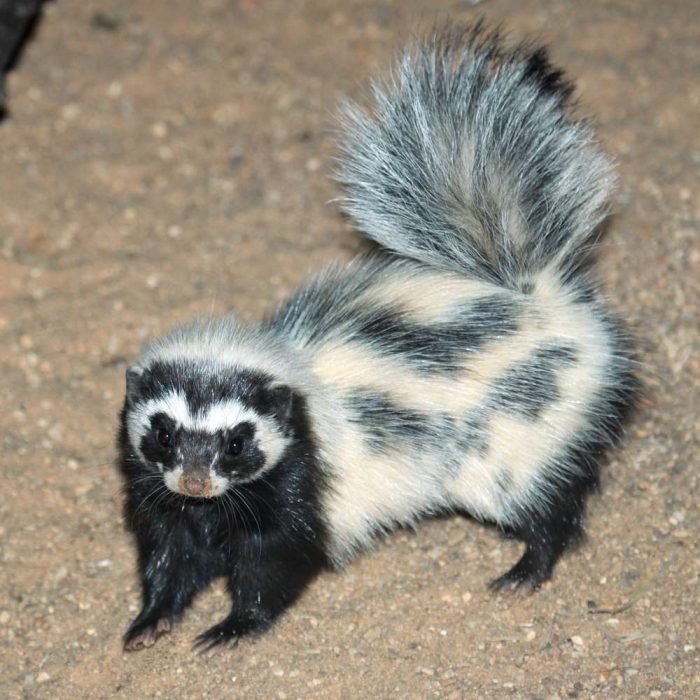Impala
( rooibok or common impala )
- Aepyceros melampus
- IUCN Status: Least Concern
- Trend: stable

General Information
The common impala is a medium-sized antelope and the most numerous animal found in the major Zambian national parks and throughout eastern and southern Africa. They are gregarious move in large herds.
Description
It features a glossy, reddish brown coat, white underbelly, white rings around the eyes and a light chin and snout. The male’s slender, lyre-shaped horns are 45–92 cm long. The ears are tipped with black. Black streaks run from the buttocks to the upper hind-legs. The bushy white tail is long, features a solid black stripe along the mid-line.
Fun Facts
The impala (Aepyceros melampus) is one of Africa’s most iconic and graceful antelopes, commonly found in Zambia’s savannas, woodlands, and riverine areas. Known for their elegant leaps, impalas can jump up to 3 meters high and 10 meters far when escaping predators like lions, leopards, or wild dogs—a behavior called “pronking” or “stotting,” which may confuse pursuers.
Interestingly, impalas have specialized glands on their hind feet that release scent trails, helping lost herd members reunite. Their name comes from the Zulu word impala, meaning “gazelle,” reflecting their speed and agility. Whether in dramatic escapes or serene grazing, impalas are a symbol of Africa’s wild beauty.
Ecology & Behaviour
Impalas have a symbiotic relationship with Oxpecker birds. The oxpeckers selectivively choose the impala even in the presence of other types of antelope. They feed on ticks from parts of the antelope’s body which the animal cannot reach by itself (such as the ears, neck, eyelids, forehead and underbelly).
Impala browse as well as graze. They are mixed feeders and eat mainly grass in the wet season and leaves as the dry season progresses. They can also be found eating the fallen red fleshly flowers of the sausage tree. To escape their pursuers they employ a confusing, zig zag escape route, with sudden directional changes and exceptionally high leaps making it difficult for the pursuing attacker to strike.
Distribution & Habitat
The impala inhabits woodlands due to its preference for shade; it can also be found between woodlands, savannahs and especially near water. They tend to be associated with the mopane and Acacia woodland trees. Impala tend to keep away from areas with tall grasses as predators could be concealed there.
Diet
Impalas have a symbiotic relationship with Oxpecker birds. The oxpeckers selectivively choose the impala even in the presence of other types of antelope. They feed on ticks from parts of the antelope’s body which the animal cannot reach by itself (such as the ears, neck, eyelids, forehead and underbelly).
Impala browse as well as graze. They are mixed feeders and eat mainly grass in the wet season and leaves as the dry season progresses. They can also be found eating the fallen red fleshly flowers of the sausage tree. To escape their pursuers they employ a confusing, zig zag escape route, with sudden directional changes and exceptionally high leaps making it difficult for the pursuing attacker to strike.
Reproduction
Impalas have a symbiotic relationship with Oxpecker birds. The oxpeckers selectivively choose the impala even in the presence of other types of antelope. They feed on ticks from parts of the antelope’s body which the animal cannot reach by itself (such as the ears, neck, eyelids, forehead and underbelly).
Impala browse as well as graze. They are mixed feeders and eat mainly grass in the wet season and leaves as the dry season progresses. They can also be found eating the fallen red fleshly flowers of the sausage tree. To escape their pursuers they employ a confusing, zig zag escape route, with sudden directional changes and exceptionally high leaps making it difficult for the pursuing attacker to strike.
Conservation
It is listed as “Least concern” on the IUCN Red list.
References
Share:
- Kingdom: Animalia
- Phylum: Chordata
- Class: Mammalia
- Order: Artiodactyla
- Family: Bovidae
- Genus: Aepyceros
- Length: 70–92 cm
- Weight: 45 to 60 kg













